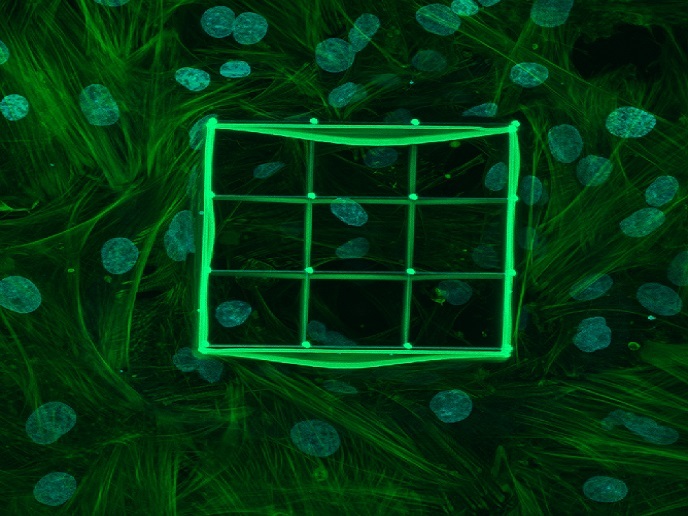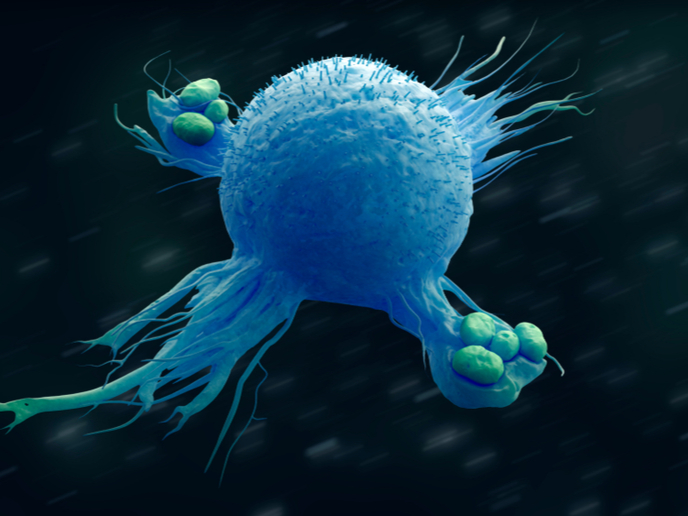A novel microengineered stem cell niche
Regenerative medicine aims to repair and recover the biological function of damaged tissues and organs often using stem cells, for example in cartilage repair or wound healing. However, this requires the development of culture substrates that mimic the native environment of stem cells and can support their expansion and differentiation.
Polymerisation of an innovative stem cell substrate
Polymeric scaffolds are structures engineered from synthetic polymer materials such as poly-L-lactic acid or poly-glycolic acid. They are emerging as synthetic 3D environments capable of influencing cell growth and proliferation, together with feeder layers or other biological compounds that are employed to maintain the phenotype of stem cells. To overcome safety concerns associated with the use of such additives and feeder layers, the NICHOID(opens in new window) project, funded by the EU’s European Research Council (ERC), developed a polymeric scaffold with grid architecture using a microfabrication technology called two-photon laser polymerisation. “Our approach led to the development of the user-friendly and safe Nichoid substrate,” explains principal investigator Manuela Teresa Raimondi from the Polytechnic University of Milan in Italy. Nichoid was tested on mesenchymal stem cells (MSCs) known for their regenerative capacity in orthopaedic, plastic and reconstructive surgery applications, as well as for their immune-suppressive potential in organ transplantation. They are also sensitive to mechanical stimuli from the micro-environment. Mechanical cues transduced within cells are believed to determine cell fate as they alter nuclear shape and hence the import and export of transcription factors that are paramount for regulation of gene expression. “The Nichoid essentially prevents stem cell spreading during proliferation by mechanically confining cells in the grid, thus avoiding this master switch towards differentiation,” emphasises Raimondi. With the help of colleagues at the affiliate Polytechnic University of Milan and at the National Research Council of Italy, researchers observed a roundish nuclear configuration in MSCs adhered to the Nichoid microscopic grid, while a spread configuration was seen in cells attached to the flat substrate surrounding the grid. The latter morphology coincided with an increase in nuclear permeability and in the flow of signalling molecules that induce cell differentiation. The observation that in stem cells nuclear import of transcription factors activating cell differentiation is regulated primarily by nuclear membrane strains was also supported through computational prediction of nuclear import flow as a function of cell morphology. This geometric control of cell stemness opens an avenue towards reprogramming the capacity of stem cells to generate multiple (multipotency) or even all cell types (pluripotency) in culture, without the need of chemical agents or genetic modifications.
Future prospects of the Nichoid substrate
The results obtained from the NICHOID project represent a substantial core of new basic knowledge on how to engineer stem cell function in culture. “The ERC was so visionary to fund me two additional proof-of-concept projects, during the NICHOID project, to boost the technology transfer of all my inventions,” emphasises Raimondi. The proof-of-concept ERC-funded MOAB project will allow the researchers to integrate their Nichoid innovation into an existing miniaturised, optically accessible bioreactor. The aim is to exploit the Nichoid substrate in a drug discovery platform for testing drugs on 3D tissue-equivalents and organoids. Commercialisation of the device, developed thanks to the ERC funding, will take place by the Polytechnic University of Milan spin-off company MOAB Srl. In light of the COVID-19 pandemic, Raimondi plans to promote the Nichoid substrate for the expansion of MSCs to cure COVID-19, based on a new therapeutic strategy already in clinical trial in China and in the United States. Moreover, she will use all the advanced research tools developed during the NICHOID project to speed up the preclinical testing necessary to bring new antiviral therapies and vaccines to the clinics.







